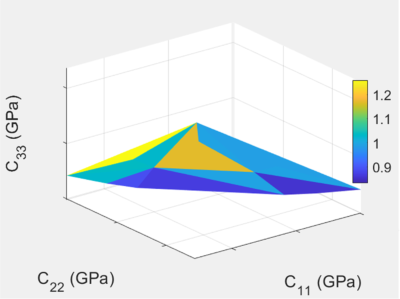Hydrogen and electric aircraft make their mark
By Michael Logan and Michael Drake|December 2023
The Aircraft Design Technical Committee promotes optimization of aircraft systems, including analysis of their future potential.
The aircraft design world continues to expand the breadth of vehicle types achieving first flights. From new versions of older designs to new design types to new integrated sustainable propulsion concepts, the design world this year carries forward the long tradition of innovation.
In January, Lockheed Martin completed the first flight of the Block 70 version of the F-16. The company said that “total flight time was approximately 50 minutes and included airworthiness checks, such as engine, flight control and fuel system checks, as well as basic aircraft handling.” Also in January, California-based ZeroAvia completed the first flight of its 19-passenger hydrogen-powered test aircraft. Using a Dornier 228 airframe, the company retrofitted one of the Honeywell TPE331 turboprop engines with a 600-kilowatt hydrogen powertrain.
Similarly, in March, Universal Hydrogen of California, flew a 40-passenger regional airliner on hydrogen fuel cell propulsion. The test airplane, nicknamed Lightning McClean, took off from Grant County International Airport in Washington and flew for 15 minutes, reaching an altitude of 3,500-feet mean sea level. The flight was made under an FAA Special Airworthiness Certificate and was the first in a planned two-year flight test campaign. The company is targeting 2025 for regulatory approval of passenger service of ATR 72 regional aircraft converted to run on hydrogen. In the March test flight, one of the airplane’s turboprop engines was replaced with Universal Hydrogen’s fuel cell-electric, megawatt-class powertrain. The other remained a conventional engine for safety of flight.
In June, Diamond Aircraft’s DART-750 made its first flight in Austria. The aircraft is powered by a Pratt and Whitney Canada PT6A-25C turboprop engine and features a Garmin 3000 avionics suite. The flight “lasted 30 minutes and covered all basic maneuvers, including performance and handling checks,” Diamond said in a press release. Later in June, the U.S. Air Force made the inaugural flight of its first Boeing T-7A Red Hawk trainer in St. Louis. The flight lasted 1 hour, 3 minutes.
The following month, Diamond Aircraft was back in the news with the first flight of its eDA40 all-electric aircraft. The aircraft is powered by a Safran Electrical and Power ENGINeUS electric motor and equipped with a battery module from Utah-based Electric Power Systems. At the end of July, the U.S. Air Force made the first uncrewed flight using artificial intelligence algorithms in a three-hour sortie by an XQ-58A Valkyrie, developed by AFRL and Kratos Defense and Security Solutions. The flight took place at Eglin Air Force Base in Florida.
In September, Germany-based H2Fly flew its hydrogen-electric HY4 demonstrator on liquid hydrogen for the first time. The company said the flight results indicate that liquid hydrogen doubles the range of the HY4 from 750 kilometers to 1,500 km.
In August, Colorado-based Boom Supersonic completed taxi tests with its subscale XB-1 demonstrator and announced the receipt of an FAA Experimental Airworthiness Certificate, good indicators for a first flight in late 2023.
The Rolls-Royce Pearl 700 turbofan received FAA certification in September, which Gulfstream said paved the way for the certification of its G700 and G800 aircraft by the end of the year.
In November, a U.S. Air Force B-21 Raider made its first flight out of Palmdale, California, marking the start of flight testing.
In January, NASA selected Boeing to build its Sustainable Flight Demonstrator. Later designated the X-66A, the heavily modified MD-90 airframe will have its original wings and engines replaced with the transonic truss-braced wing configuration. In August, the Air Force selected California startup JetZero to develop a full-scale blended-wing body flight demonstrator. Both projects aim to demonstrate technologies that will net significant gains in aircraft efficiency over conventional designs.



































